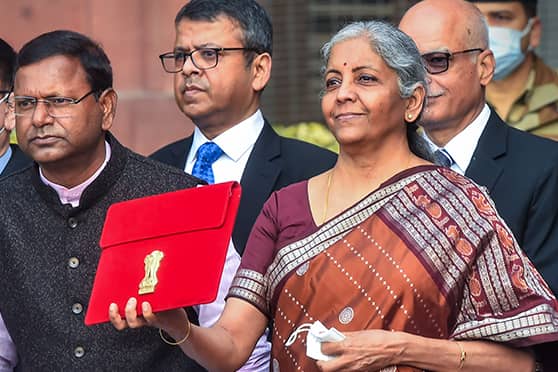Union Budget 2022-23: Emphasis on digital education, regional languages


Union finance minister Nirmala Sitharaman highlighted the need for quick adoption of digital learning and weightage to regional languages in higher education institutions as well as schools while tabling her fourth General Budget on February 1.
Sitharaman proposed to set up a digital university aimed at providing access to digital education to more students from across the country. The digital university will collaborate with the best of higher education institutions from across India and offer programmes in regional languages, she said.
Details of how this digital university would function were not shared by the government by the time this report was filed. However, Sitharaman said in her speech that the university would function on a hub-and-spoke model – a network that has a central component connected to multiple networks around it.
Talking about school education, the finance minister admitted the detrimental effect of the COVID-19 pandemic on school-going children, especially those belonging to vulnerable sections. The government recognised the need to build supplementary teaching resources, she said.
The e-Vidya programme of the Centre, launched in May 2020 to provide education through television to students who do not have access to the internet or compatible devices, will now be expanded from 12 channels to 200 channels for students of Classes I to XII, the finance minister announced.
The e-Vidya programme was launched during the first COVID-induced lockdown, which also highlighted the disparity among schoolchildren in India in terms of access to digital means of education.
“This (e-Vidya) will enable states to provide supplementary education in regional languages,” said Sitharaman.
The Centre, she said, was also working on steps to create high-quality digital content for learning and train teachers in using the latest digital tools for imparting lessons.
The Economic Survey 2021-22, tabled by Sitharaman in Parliament on January 31, highlighted that the closure of schools and colleges have had a significant impact on education. In the Economic Survey, the government relied on the findings of the Annual Status of Education Report (ASER) as data available with the government dates back to 2019-20.
ASER found that despite the pandemic, enrolment in the 15-16 ahge group continues to improve as the number of ‘not enrolled’ children in this age group has dropped from 12.1% in 2018 to 6.6% in 2021. However, ASER also found that during the pandemic, six to 14-year-old children ‘not currently enrolled in schools’ increased from 2.5% in 2018 to 4.6% in 2021.
Sitharaman also announced the launch of DESH stack e-portal, a digital ecosystem for skilling and livelihood, in a move aimed at making the youth employment-ready.
“This aims to empower citizens to skill, reskill or upskill through online training,” she said.